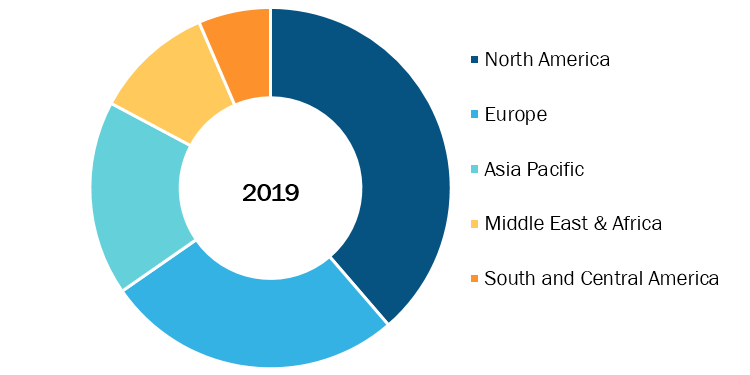Surgical Gowns Segment to Grow at Highest CAGR during 2020–2027
According to our new market research study on “Hospital Gowns Market to 2027 – COVID-19 Impact and Global Analysis – by Type, Risk Type, and Usability,” the market is expected to reach US$ 4,542.67 million by 2027 from US$ 2,620.88 million in 2019. The market is estimated to grow at a CAGR of 7.2% from 2020 to 2027. Factors such as increase in number of surgical procedures, initiatives to support health protection of patients from hospital-acquired infections, and key players for hospital gowns introducing new products in the market. However, adoption of robotic surgeries is expected to obstruct the growth of the market to a certain extent during the forecast period.
Based on type, the hospital gowns market is segmented into surgical gowns, patients’ gowns, and non-surgical gowns. The surgical gowns segment held the largest share of the market in 2019, and is anticipated to register the highest CAGR of 7.7% in the market during the forecast period. Growth of this segment is attributed to rising number of surgeries across the globe, increasing prevalence of chronic diseases, and growing focus on prevention of hospital acquired infections. In addition, continuous innovation by surgical gown manufacturers is further accelerating the growth of the market.
The healthcare industry has been witnessing rapid transformations since the past few years. The industry has observed various technological advancements. Owing to the need for better healthcare facilities, technology-enabled care (TEC) solutions are being preferred in the healthcare systems in the emerging economies. Increase in aging population, rise in incidence of chronic illnesses, and pediatric care are the primary factors driving the growth of the healthcare sector. Several established players in the industry have been investing significant amount of their revenue to develop better and advanced products and technologies. In addition, the availability of reimbursement for various medical procedures is expected to fuel the growth of the industry in the coming years. There has been a significant increase in the healthcare expenditure in the past few years. As per the World Bank, healthcare expenditure accounts for 9.94% of the global GDP. In the US, 17.1% of its GDP is committed to the healthcare industry, whereas in Latin America, healthcare expenditures account for only 7.24%, with Brazil at 8.3%, and Mexico at 6.3%. In 2017, the per capita healthcare expenditure in Germany, the UK, China, and India was 11.3%, 9.1%, 5.6%, and 4.7%, respectively. The above stated factors are expected to offer growth opportunities in the healthcare industry at the global level.
The hospital gowns are among the highly used hospital consumables. Hospitals utilize a large quantity of hospital gowns for the general patients. Moreover, due to the COVID-19 pandemic, there has been a tremendous rise in the demand for hospital gowns worldwide. Various market players of non-healthcare businesses are engaged in the production of hospital gowns to fulfill the high demand. The existing players are ramping up the production and supply chain for the hospital gowns. The disposable hospital gowns have become one of the crucial components in the personal protective equipment (PPE) kit that is a prerequisite for medical staff and personnel dealing with any medical work. This has positively affected the growth of the hospital gowns market.
Hospital Gowns Market, by Region, 2019 (%)
Hospital Gowns Market Forecast to 2027 - COVID-19 Impact and Global Analysis by Type (Surgical Gowns, Non-Surgical Gowns, and Patient Gowns), Risk Type (Minimal, Low, Moderate, and High), and Usability (Disposable and Reusable), and Geography
Hospital Gowns Market Growth and Size 2031
Download Free Sample
The report segments global hospital gowns market as follows:
By Type
- Surgical Gowns
- Non-Surgical Gowns
- Patient Gowns
By Risk Type
- Minimal
- Low
- Moderate
- High
By Usability
- Disposable
- Reusable
By Geography
- North America
- US
- Canada
- Mexico
- Europe
- France
- Germany
- UK
- Spain
- Italy
- Asia Pacific (APAC)
- China
- India
- Japan
- Australia
- South Korea
- Middle East & Africa (MEA)
- Saudi Arabia
- UAE
- South Africa
- South and Central America (SCAM)
- Brazil
- Argentina